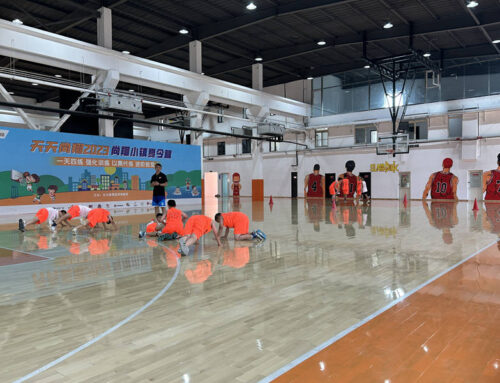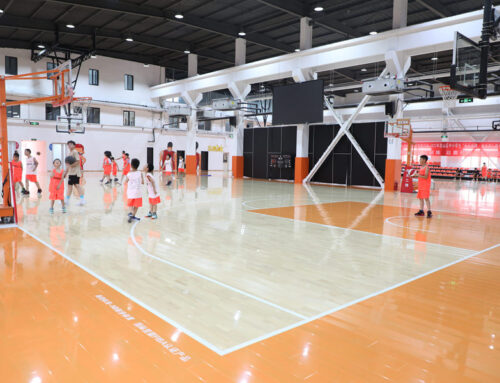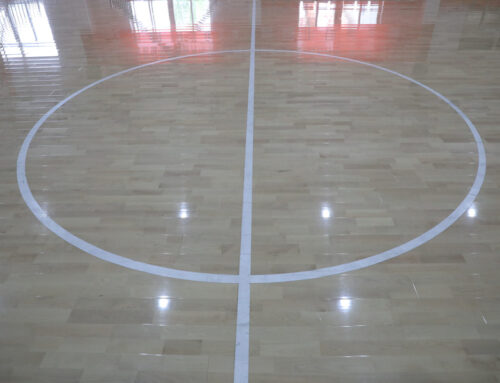Yes, hardwood sports flooring is a popular and traditional choice for sports venues, known for its durability, performance, and timeless appearance. It is specifically designed to meet the needs of athletic activities by providing a surface that enhances performance, ensures player safety, and withstands heavy use over time.

Key Features of Hardwood Sports Flooring
- Material:
- Made from solid hardwood, typically species like maple, oak, or beech.
- Maple is the most popular choice for basketball courts and other high-performance sports floors due to its hardness, smooth grain, and excellent shock resistance.
- Performance:
- Hardwood sports floors are designed to provide optimal ball bounce, shock absorption, and slip resistance.
- They comply with international standards like FIBA, NBA, and DIN for sports performance.
- Durability:
- Solid hardwood can be sanded and refinished multiple times, extending its lifespan for decades.
- The surface is coated with polyurethane finishes for resistance to scratches, wear, and moisture.
- Subfloor System:
- The hardwood is often installed over a subfloor system that includes padding or cushioning for added shock absorption and impact resistance, protecting athletes from injuries.
- Aesthetics:
- Offers a classic and professional look with its natural wood grain and finish.
- Can be customized with court markings, logos, and color accents.
Advantages of Hardwood Sports Flooring
- High Performance:
- Provides consistent ball response and controlled traction for sports like basketball, volleyball, and badminton.
- Reduces impact on athletes’ joints through shock-absorbing properties.
- Longevity:
- With proper maintenance, hardwood sports floors can last 40-50 years or more.
- Customization:
- Can be tailored to specific sports requirements or multi-purpose use.
- Logos, court lines, and custom designs can be applied with durable paints and finishes.
- Eco-Friendly:
- Made from natural, renewable materials. Many manufacturers source wood from sustainably managed forests.
Challenges of Hardwood Sports Flooring
- Sensitivity to Environment:
- Hardwood expands and contracts with changes in temperature and humidity, requiring controlled indoor conditions.
- Improper moisture management can lead to warping or cracking.
- Maintenance:
- Requires regular cleaning to prevent dirt and grit from damaging the finish.
- Periodic sanding and refinishing are necessary to maintain performance and aesthetics.
- Cost:
- Higher upfront cost compared to synthetic alternatives.
- Installation requires professional expertise and a well-prepared subfloor.
Common Applications
- Professional Sports Arenas: NBA and FIBA-regulated courts.
- School and College Gymnasiums: Basketball, volleyball, and multi-sport courts.
- Community Centers: Recreational sports and events.
- Dance and Aerobic Studios: Hardwood provides a stable yet resilient surface.
Comparison with Engineered Sports Flooring
| Aspect | Hardwood Sports Flooring | Engineered Sports Flooring |
|---|---|---|
| Material | Solid wood (e.g., maple, oak) | Top hardwood layer over core layers |
| Durability | Lasts decades with refinishing | Durable but fewer refinishes possible |
| Stability | Sensitive to humidity/temp changes | More resistant to environmental changes |
| Cost | Higher upfront cost | More cost-effective initially |
| Applications | High-level sports & traditional venues | Versatile, suitable for various facilities |
Hardwood sports flooring is an excellent choice for facilities that prioritize performance, aesthetics, and long-term durability. However, proper maintenance and environmental control are essential for maximizing its benefits.





